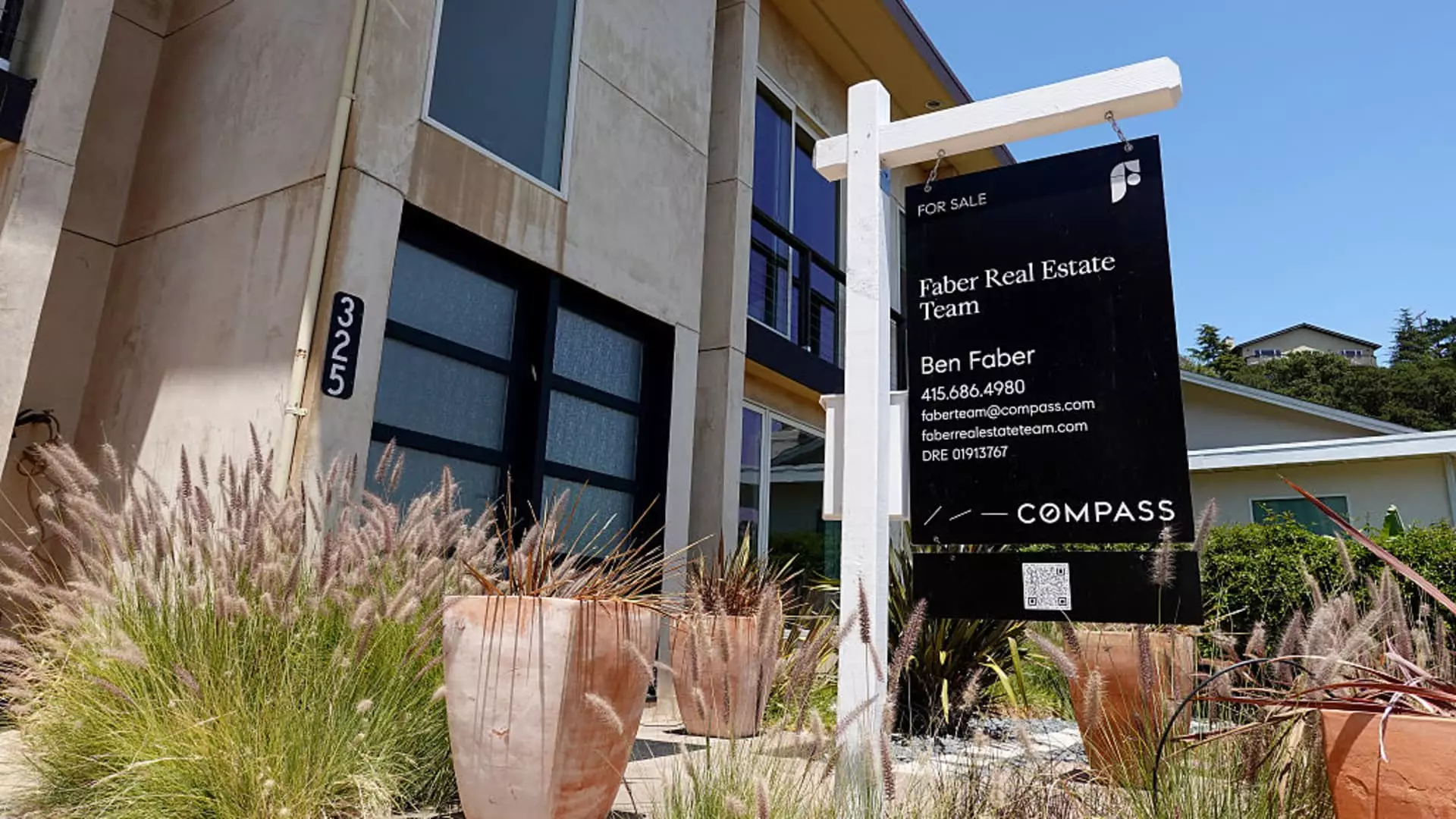The housing market is finally experiencing what many have long predicted— a cooling period spurred by rising supply and waning demand. The latest data from the S&P CoreLogic Case-Shiller Index reveals an annual increase of only 2.7% in home prices by April, down from the 3.4% surge seen in March. This deceleration marks the lowest annual increase in nearly two years, and serves as an unsettling foreshadowing of what lies ahead. Fluctuating markets are not new; however, the present scenario is nuanced, suggesting we may be witnessing a pivotal shift away from the speculative fervor that characterized the early pandemic housing boom.
As recent reports showcase, home prices are trending flat when examined through the lens of more current metrics provided by Parcl Labs. This disconnect between a historical view and present-day realities serves to highlight the underlying tensions in the market. Prices are not merely stagnant; they are indicative of a broader economic landscape teetering on the edge of uncertainty.
Regional Disparities – A Tale of Two Markets
One cannot overlook the remarkable transformation in regional leadership within the real estate markets. As noted by Nicholas Godec, head of fixed income at S&P Dow Jones Indices, markets that enjoyed the spotlight during the pandemic are now faltering, while traditionally stable regions such as the Midwest and Northeast are stepping into the limelight. Such an inversion of fortunes reflects a gradual and maturing market that is increasingly dictated by economic fundamentals rather than the whims of speculative behavior.
Take New York City, for example, which has experienced the highest price increase at 7.9% annually, followed closely by Chicago and Detroit. This change paints a compelling picture of a nation recalibrating its economic compass. Conversely, the once-coveted Sun Belt markets that had seen explosive price growth are beginning to retract. Tampa and Dallas have both devolved into negative territory, with price drops of 2.2% and 0.2%, respectively. This disheartening outlook for formerly hot markets begs the question: have we learned anything from the cyclical nature of these booms and busts?
The Stifling Effect of Rising Mortgage Rates
A significant contributor to this chilling environment is the escalating mortgage rates that surged above 7% in April, keeping buyer affordability within reach of only the most financially secure. The National Association of Realtors recently revealed that first-time homebuyers now account for merely 30% of May sales, a steep decline from the historical norm of 40%. How ironic that these young aspirants of the American dream, often characterized by their tenacity, are now systematically priced out of homeownership— a cornerstone of economic stability and a crucial driver of community growth.
The rising supply of homes, although a positive sign for prospective buyers, still remains below pre-pandemic levels. With only 6% of sellers at risk of incurring losses, according to Redfin, it becomes clear that individuals are cautious about leaving behind their pandemic-era mortgage rates below 4%. The lingering fear of financial downturn blends with a lack of incentive to sell, effectively creating a stifling atmosphere for potential buyers hoping for relief.
A Fragile Foundation Amidst Rising Tensions
While it is accurate to state that the housing market is in a state of recalibration, it is equally critical to acknowledge that prices are unlikely to experience the catastrophic declines witnessed during the subprime mortgage crisis. Godec’s assertion about the supply-demand imbalance acting as a price floor may provide comfort to some; however, it also masks the underlying fragility that exists within the system.
As the landscape shifts and demand diminishes, the choice to stay put may reign supreme for many homeowners. The sense of security derived from their present positions offers little incentive to engage with an increasingly volatile market. And therein lies the crux— we must ask ourselves whether we are merely postponing an inevitable reckoning or genuinely observing a transformation towards a mature, balanced, and sustainable housing landscape.
Navigating these uncharted waters will require vigilance, adaptation, and the willingness to confront the complexities of a market that has proven time and again to be unpredictable. Each move, each decision, each shift in regional dynamics serves as a reminder of the delicate equilibrium upon which the housing market rests.


Leave a Reply